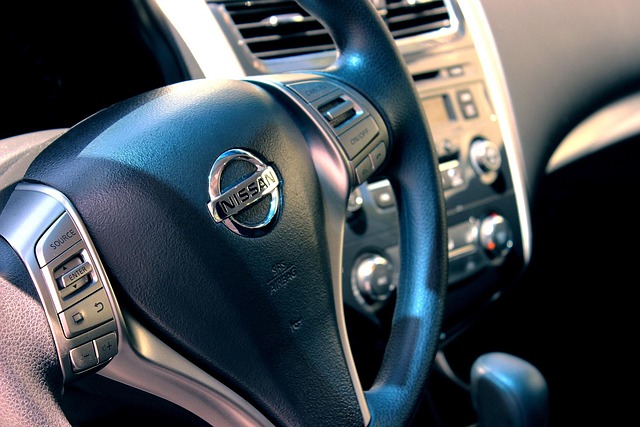Looking to register your car in California? This comprehensive guide walks you through every step, from understanding key requirements to securing your vehicle’s registration. First, grasp the essential California car registration rules, then gather the needed documents for a precise Vehicle Identification Number (VIN) verification. Next, conduct the VIN check, fill out the application, and pay associated fees. Finally, receive your official California Registration Certificate upon successful submission. Ensure a smooth process with thorough VIN verification as your cornerstone.
- Understand California Car Registration Requirements
- Gather Necessary Documents for VIN Verification
- Perform Vehicle Identification Number (VIN) Check
- Complete Application and Pay Fees
- Receive Your California Registration Certificate
Understand California Car Registration Requirements

Before registering your car in California, it’s crucial to understand the state’s specific requirements for vehicle identification number (VIN) verification. California requires all vehicles to undergo a thorough inspection to ensure they meet safety and emissions standards. This process involves a detailed examination of various components, including the VIN, which acts as a unique identifier for your vehicle. A mobile vin inspection or mobile vin verification service can greatly simplify this step by allowing an authorized technician to conduct the check right at your location, saving you time and effort.
During the registration process, the California Department of Motor Vehicles (DMV) will cross-reference your VIN with their records to confirm its authenticity and history. This is a critical aspect of preventing stolen vehicles from being registered and ensuring that all cars on the road meet the necessary safety standards. Understanding these requirements upfront can streamline the registration process, making it easier for both new car owners and those transferring titles.
Gather Necessary Documents for VIN Verification

Before heading to the California Department of Motor Vehicles (DMV) or a designated agent for registration, ensure you have all the required documents for a smooth vin verification process. This includes your vehicle’s vin (Vehicle Identification Number), which is typically located on the dashboard near the driver’s side door or in the engine bay. Also, gather important paperwork like proof of ownership, which can be a title or a bill of sale, and valid identification documents such as a driver’s license or passport.
For added convenience, consider utilizing mobile vin verification services that allow you to complete this step digitally. These services not only simplify the process but also offer faster turnaround times. Make sure these digital platforms are approved by the DMV to ensure your data security and compliance with California’s regulations for vin inspection.
Perform Vehicle Identification Number (VIN) Check

Before registering your car in California, performing a Vehicle Identification Number (VIN) check is a crucial step. This involves verifying the VIN through an official channel to ensure it matches the vehicle’s make, model, and year as stated in the documents. You can perform this vin verification online or by contacting the California Department of Motor Vehicles (DMV). A valid VIN ensures that the car you’re registering is genuine and has not been reported stolen or had its identity altered.
Consider using a mobile vin inspection service for convenience. These services send a professional to your location to perform the VIN inspection, saving you time and effort. Alternatively, many mobile vin verifiers also offer this service, allowing you to confirm your car’s history quickly and accurately before proceeding with registration.
Complete Application and Pay Fees

To register your car in California, you’ll need to complete an Application for Title and Registration (Form DV305) available from the California Department of Motor Vehicles (DMV). This form requires detailed information about your vehicle, including its make, model, year, and unique Vehicle Identification Number (VIN). Accurately filling out this section is crucial, as it facilitates the vin verification process, which is a key step in ensuring the authenticity of your vehicle.
Once your application is complete, you’ll need to pay the required fees. These include the registration fee, a title fee if applicable, and potentially other charges based on your vehicle’s age or type. You can typically make these payments online through the DMV website or at a local DMV office. Alternatively, some services offer mobile vin verification, where a professional can inspect your vehicle and its VIN using specialized tools, providing an efficient and convenient option for busy individuals.
Receive Your California Registration Certificate

After completing the registration process, you’ll receive your California Registration Certificate. This document is crucial for legal car ownership in the state and serves as proof that your vehicle has met all the necessary requirements. Ensure you keep this certificate on hand, as it may be required for future transactions or during routine vehicle inspections.
A key step in obtaining your registration certificate is undergoing a Vehicle Identification Number (VIN) verification process. This involves confirming the authenticity of your car’s VIN and ensuring it matches the details provided during registration. Many DMV locations offer this service, while some opt for a mobile vin verifier or even conduct a remote vin inspection to streamline the procedure.
Registering a car in California involves understanding the state’s requirements, gathering essential documents, passing a VIN verification check, completing an application, and paying the associated fees. Once these steps are successfully navigated, you’ll receive your California Registration Certificate, marking the official completion of the process. Remember, a thorough understanding of each step, especially during the vin verification process, ensures a smooth and efficient registration experience.



